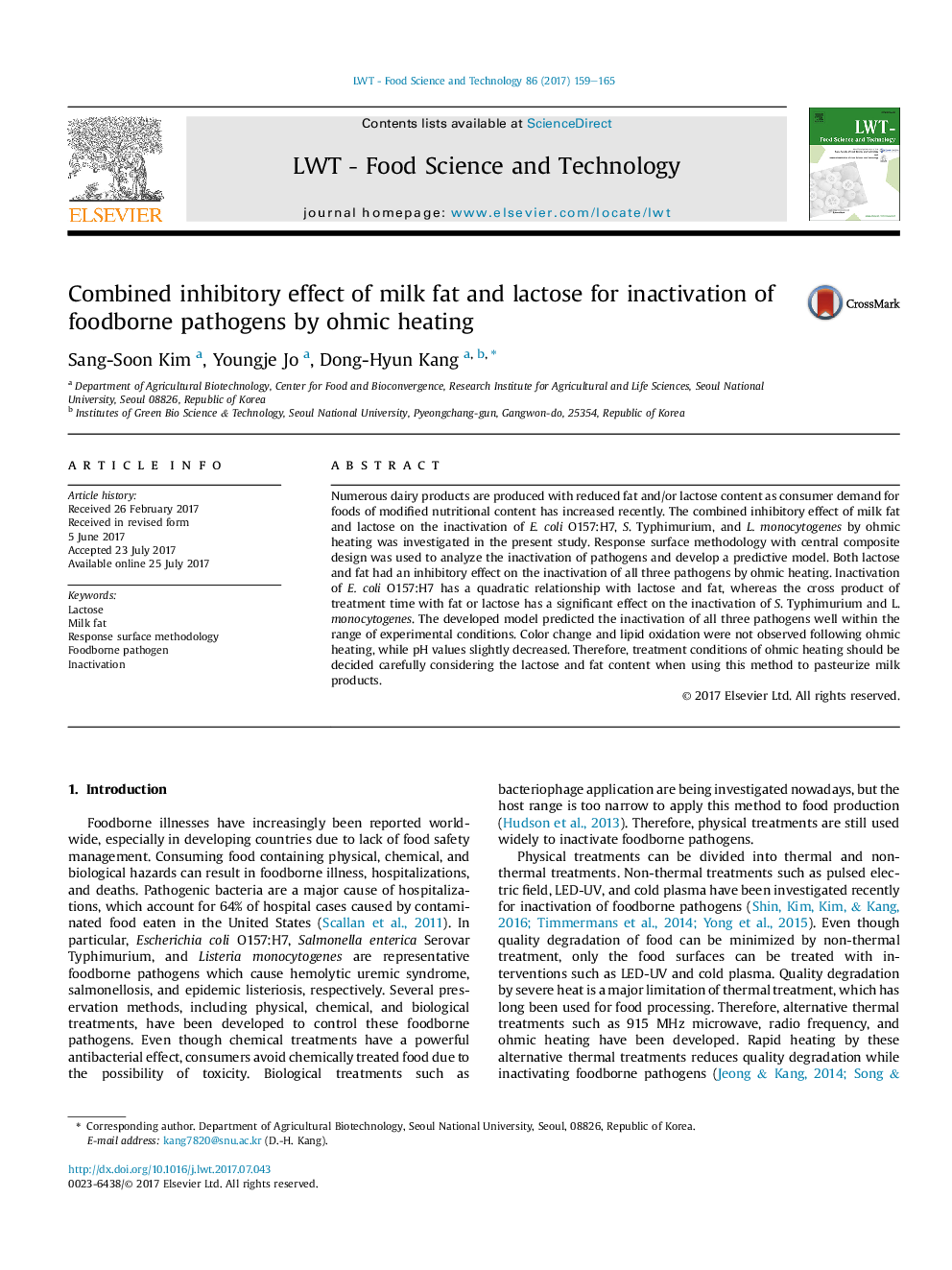| Article ID | Journal | Published Year | Pages | File Type |
|---|---|---|---|---|
| 5768672 | LWT - Food Science and Technology | 2017 | 7 Pages |
â¢Effect of lactose and fat on the inactivation of pathogens was investigated.â¢Increasing lactose or fat showed inhibitory effect on the inactivation of pathogens.â¢Predictive model was developed by response surface methodology.â¢Developed predictive model was verified at four independent treatment conditions.â¢Color change and lipid oxidation were not observed, while pH values decreased.
Numerous dairy products are produced with reduced fat and/or lactose content as consumer demand for foods of modified nutritional content has increased recently. The combined inhibitory effect of milk fat and lactose on the inactivation of E. coli O157:H7, S. Typhimurium, and L. monocytogenes by ohmic heating was investigated in the present study. Response surface methodology with central composite design was used to analyze the inactivation of pathogens and develop a predictive model. Both lactose and fat had an inhibitory effect on the inactivation of all three pathogens by ohmic heating. Inactivation of E. coli O157:H7 has a quadratic relationship with lactose and fat, whereas the cross product of treatment time with fat or lactose has a significant effect on the inactivation of S. Typhimurium and L. monocytogenes. The developed model predicted the inactivation of all three pathogens well within the range of experimental conditions. Color change and lipid oxidation were not observed following ohmic heating, while pH values slightly decreased. Therefore, treatment conditions of ohmic heating should be decided carefully considering the lactose and fat content when using this method to pasteurize milk products.
